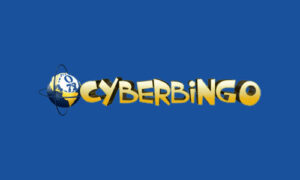Ethereum is a self-sovereign, open-source blockchain platform that allows programmers to create and operate smart contracts as well as other decentralized applications (dApps). Founded by Vitalik Buterin and mined in July 2015, Ethereum is quickly becoming one of the world’s largest cryptocurrencies and blockchain platforms in terms of market capital, being second only to Bitcoin.
What Makes Ethereum Different from Bitcoin?
While Bitcoin serves as a currency and a store of value, Ethereum was primarily created to facilitate smart contracts and decentralized applications. Smart contracts are self-executing contracts, with the terms of the agreement directly written into lines of code. This is the principal feature that allows Ethereum to go far beyond basic transactions and enables any number of complex programmatic applications to be able to run on its platform.
Key Elements of Ethereum
1. Ether (ETH)
Ether is the native digital currency of the Ethereum network. It is mainly used as a medium of exchange on the network to pay fees for transactions and computation services. Ether takes up different roles in the Ethereum ecosystem, serving as currency and also a unit of account.
2. Smart Contracts
Automated contracts that are activated upon fulfillment of predetermined criteria are called smart contracts. Such contracts remove middlemen, smoothen transactions, and build trust. Smart contracts are written using Solidity, an Ethereum-specific programming language, and can thus be applied in a wide array of applications-from finance to supply chain management.
3. Decentralized Applications (dApps)
Decentralized applications run on the Ethereum blockchain rather than a central server. Categories of dApps include decentralized finance (DeFi), games, social networks, and many more. dApps gain the security and transparency offered by Ethereum and much more control over data for users.
4. Ethereum Virtual Machine (EVM)
The Ethereum Virtual Machine (EVM) defines the runtime environment in which smart contracts and dApps execute on Ethereum blockchain. Developers can focus on developing highly sophisticated computations without worrying about the complex architectural infrastructure because the EVM executes that code according to its writer’s intentions.
5. Consensus Mechanism: Proof of Stake (PoS)
Initially working on a Proof of Work (PoW) consensus, Ethereum transformed into Proof-of-Stake (PoS) with the ETH 2.0 upgrade that abrogated high energy consumption and improved its scalability. As regards PoS, validators are considered or selected to produce new blocks on the basis of how much ETH they hold and want to “stake” as collateral.
The Evolution of Ethereum
Ethereum 1.0: The Original Network
Salient basic features of the platform, such as smart contracts and the ERC-20 token standard, were completed in the first version of Ethereum popularly known as Ethereum 1.0. Despite the technologies it co-invented, Ethereum 1.0 fell prey to specific constraints such as scalability and transaction fees that shot high especially during busy times.
Ethereum 2.0: Moving to PoS
Ethereum 2.0 was invented in succession to the restrictions of its forerunner; it would gradually herald the dawn of a network that would be faster and more scalable than the precursor. Important phases of the rollout of Ethereum 2.0 are:
- Phase 0: The Beacon Chain, which began PoS and set the track for other stages, was launched in December 2020.
- Phase 1: Introduces shard chains and improves the ability of a network to carry out multiple simultaneous transactions.
- Phase 1.5: This phase encompasses the integration into the new PoS platform of the original Ethereum 1.0 chain, tom-tom turning the old chain into the new.
- Phase 2: To introduce many changes including features to support smart contracts.
Different Use Cases of Ethereum
This multi-dimensional platform is so flexible that it can give room to a broad variety of applications and use cases across many industries.
1. Decentralized Finance (DeFi)
DeFi collects a number of financial services based on Ethereum and operate without in-between parties. Their decentralized platforms allow them to lend, borrow, trade, and earn interest on cryptocurrencies by decentralized means through such DeFi schemes: Uniswap, Aave, and Compound.
2. Non-Fungible Tokens (NFTs)
Ethereum has turned into the top platform for producing and trading NFTs. Not-fungible tokens are specific digital assets that represent ownership over certain items, artworks, and collectibles. NFTs are disrupting the way actors, games, and schools operate, monetizing these new innovative digital environments into the ownership.
3. Supply Chain Management
Smart contracts can simplify supply chain operations by systematizing transactions and letting things happen transparently; with Ethereum, they can monitor, authenticate, and act independently; predetermined conditions applying to smart contracts are qualified to have been satisfied.
4. Identity Verification
This can be achieved by tamperproof systems in which individuals will now be asked to prove their identities. The invitation of identity solutions to Ethereum will allow people to keep their identities secure from the threat of identity theft.
Challenges and criticisms
Ethereum, although very strong in its advantages, has the following penalties against it:
1. Scalability concerns
The overall increase in the user number, as well as the dApps, created congestion in the Ethereum network running under extreme transaction fees at peak hours. Both will resolve congestion problems created due to overwhelming traffic: One will change PoS while the second will implement shard chains.
2. Regulatory Issues
Recently, there has been increased attention paid by governments and regulatory authorities to cryptocurrencies and blockchain technology. The decentralized nature of Ethereum will have implications for the present financial regulations in which different aspects of Ethereum may be found illegitimate in their considerations. It is possible that some dApps or the tokens will be found in illegal aspects in future.
3. Security Risks
Although the Ethereum blockchain is secure, a vulnerability exists in smart contracts themselves and can be exploited by malicious actors. Developers need to follow best practices and get their code thoroughly reviewed to mitigate against such risks.
The Future of Ethereum
Ethereum has a bright future, continuously evolving and adapting to the needs of an ever-changing crypto landscape. With the transition into Ethereum 2.0 still in progress, improvements of scalability and security will remain key with an eye on relevance within blockchain space.
Embracing Interoperability
This interoperability can add value so users can transact seamlessly across platforms. Ethereum’s success also depends on the ability to converge with other blockchains and networks to form an ecosystem of interconnected decentralized applications.
Continued Innovation
As far as cryptocurrency and blockchain are reasonable, innovation on Ethereum will always remain, whether it is through layer-2 solutions (Optimistic Rollups and zk-Rollups) or enhanced smart contract capabilities.
Conclusion
There can be no overstating the transformational influence Ethereum has had in the blockchain ecosystem. Its solid foundation for smart contract and dApps technology rastered the way for many innovations, which include DeFi, NFTs, etc., making it a key building block for the decentralized web. The ability of Ethereum to continue developing means an infinite potential to reform industries and redefine digital communication with a lot of promise for developers, users, and investors.







